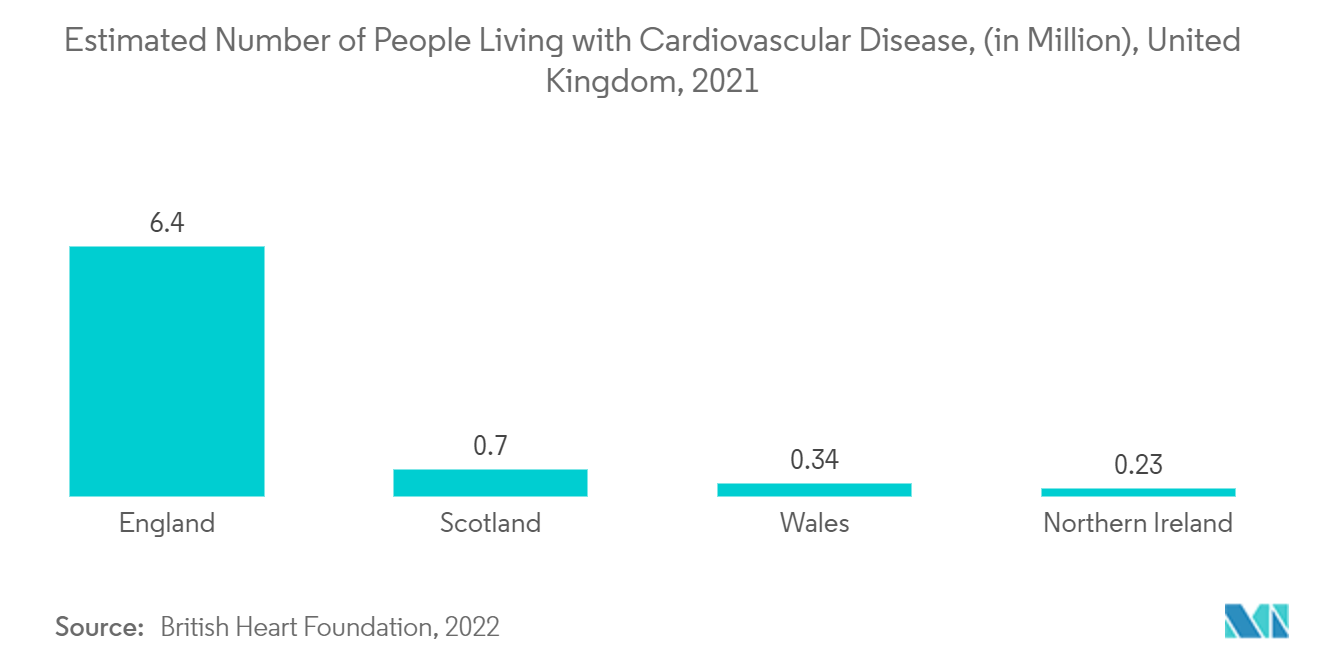Market Trends of Wearable Heart Monitoring Devices Industry
This section covers the major market trends shaping the Wearable Heart Monitoring Devices Market according to our research experts:
The Optical Technology-based Product is Projected to Have a Notable Growth Rate in the Wearable Heart Monitoring Devices Market Over the Forecast Period
The optical technology-based product segment is anticipated to register a significant growth rate during the forecast period owing to the factors such as the rise in the prevalence of cardiovascular diseases (CVDs), the growing geriatric population, and the rising product approvals This optical technology-based product is based on a method called photoplethysmography (PPG). It measures heart rate by shining light into the skin and measuring the amount of light that is scattered by blood flow. These days, wearable devices based on optical technology are gaining wide interest for continuous monitoring of the heart rate. Attributable to its uncomplicated features, available direct-to-consumer, reduce direct contact with clinical staff, and is inexpensive as compared to electric pulse-based products.
Further, according to the Government of the UK, Office of Health Improvement & Disparities, in 2020-21 the admission rate for chronic heart disease in NHS Barking and Dagenham CCG was 427.9 for every 100,000 people in the population (580 admissions). This was significantly higher than the England rate (368 per 100,000). Thus, the rise in cardiovascular complications increases the demand for heart monitoring thereby driving the segment growth over the forecast period. Most CVDs can be inhibited by real-time monitoring of heart rate, which plays a vital role in reducing the mortality and cost of treatment. For instance, data published by American Heart Association (AHA) in November 2021 found that the Fitbit PPG detections identified atrial fibrillation (AF) events 98% of the time, as confirmed by ECG patch monitors. Thus, the rising efficiency of the PPG algorithm is expected to increase the demand for optical technology-based products in the coming years, thereby contributing to market growth.
In addition, numerous market players are focused on the execution of strategic initiatives, thereby contributing to the growth of the wearable heart monitoring devices market. For instance, in April 2022, Google-owned Fitbit received product approval from the FDA for a new photoplethysmography (PPG) algorithm named 'AFib' to identify AF. This algorithm is likely to power a new irregular heart rhythm notification feature on the Fitbit device. Therefore, due to the advancements offered by the key players in optical technology-based products for wearable heart monitoring devices, this market segment is expected to witness significant growth during the forecast period.
Hence, due to the increase in cardiac diseases, and the surge in optical technology-based cardiac monitoring wearable product launches, the studied segment in the market is anticipated to witness growth over the forecast period.

North America is Likely to Hold a Significant Share in the Market Over the Forecast Period
North America is likely to hold a significant share of the wearable heart monitoring devices market. This is due to factors such as the rising incidences of CVDs and the presence of major market players and their strategic initiatives. For instance, as per the CARES 2021 annual report, 62.5% of males were reported with out-of-hospital cardiac arrest (OHCA) in the United States. As per the same source, 97.6% of adults and 2.4% of children experienced OHCA in 2021 in the United States. Thus, as the number of cardiac complications increases, the demand for wearable heart monitoring devices rises and drives the market growth over the forecast period.
Due to government initiatives and the growing nature of the wearable heart monitoring device market, the major players have shifted their focus in this industry and engaged in the implementation of strategic initiatives. For instance, in March 2022, Biotricity Inc., a medical diagnostic and consumer healthcare technology company, launched its FDA-cleared, wireless wearable cardiac monitoring device, Biotres. The product was available for physicians, medical offices, hospitals, and individual use since late-February 2022.
Furthermore, in August 2022, Samsung Canada launched the Galaxy Watch5 and Galaxy Watch5 Pro equipped with a unique BioActive Sensor technology from Samsung that drives the next era of digital health. It comes with Samsung BioActive Sensor (Optical Heart Rate + Electrical Heart Signal + Bioelectrical Impedance Analysis), Temperature Sensor, Accelerometer, Barometer, Gyro Sensor, Geomagnetic Sensor, and Light Sensor.
Hence, due to the increase in cardiac diseases, and the surge in cardiac monitoring wearable product launches, North America is anticipated to witness significant growth over the forecast period.


